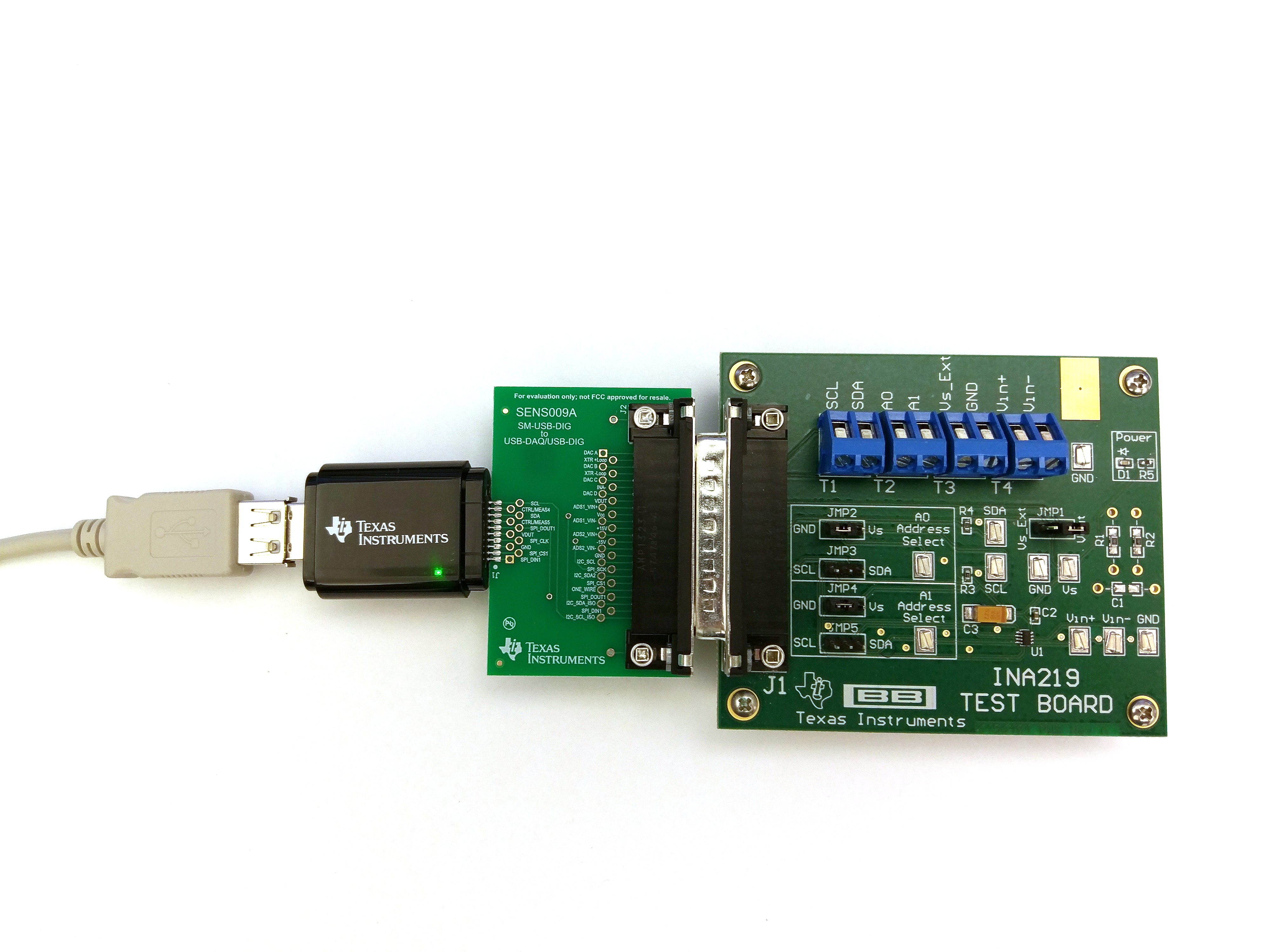SBOU074E january 2009 – july 2023 INA219
3.2 Typical Hardware Connections
The INA219EVM hardware setup involves connecting the three PCBs of the EVM together, and connecting an external shunt and load. The external connections may be the real-world system that the INA219 will be incorporated into. Figure 3-1 shows the typical hardware connections.
 Figure 3-1 Typical Hardware Connections
Figure 3-1 Typical Hardware Connections